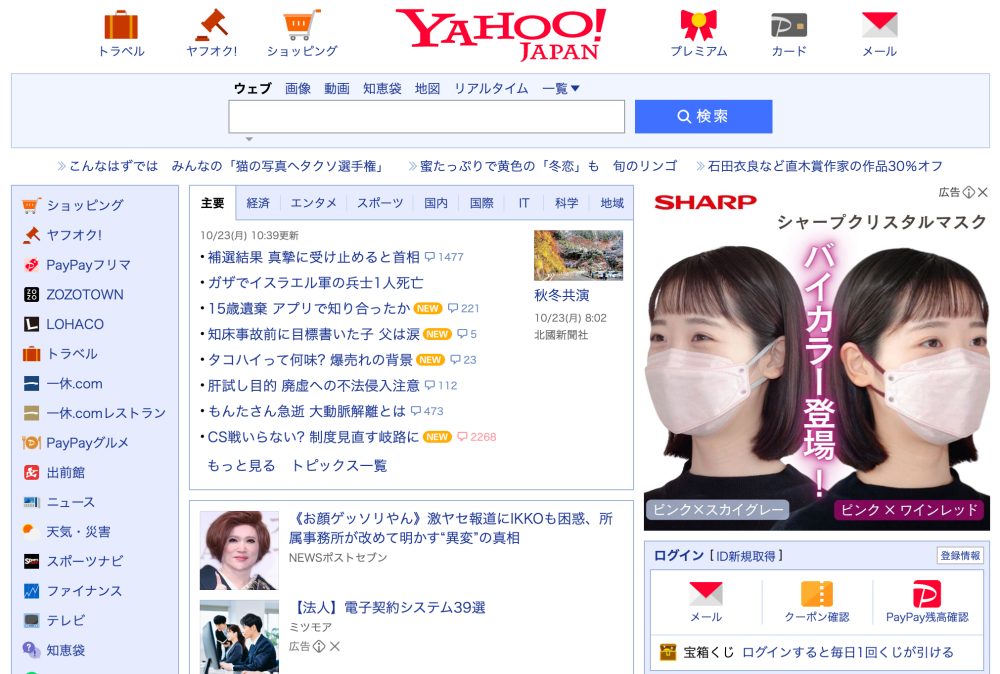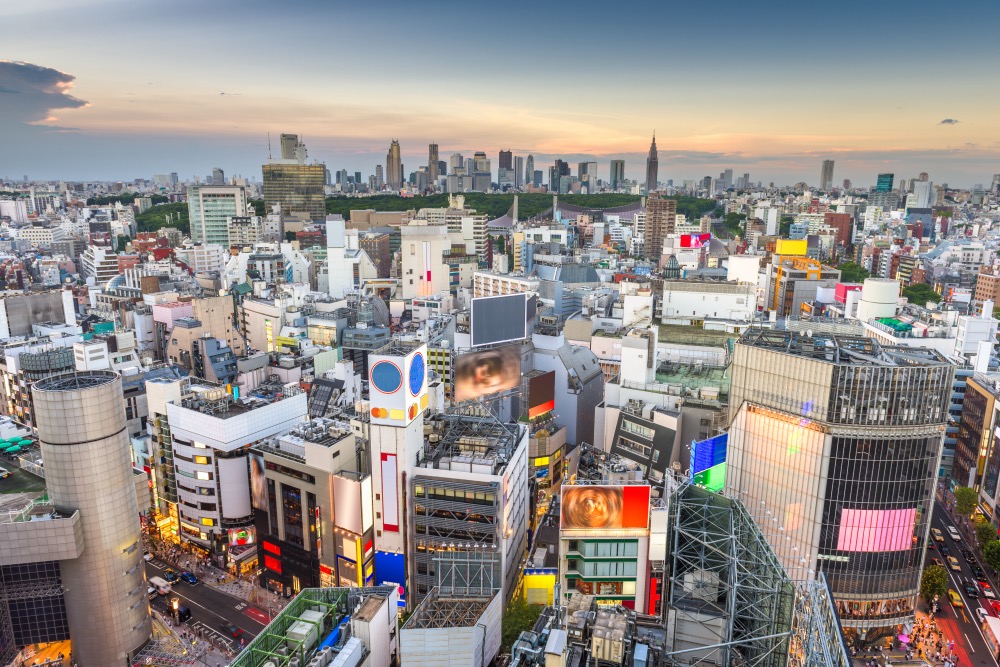Understanding Japan’s unique digital ecosystem compared to the global context is both challenging and enlightening.
In this interview, we sat down with Chris Tilly, Managing Director of KVA, a renowned digital agency celebrated for its strategic and creative approach in the digital realm.
We touch upon the significance of platforms like LINE, the different motivations behind social media engagement, and how brands in Japan adopt a more nuanced, collective approach.
Chris’ insights are backed by his experience at KVA, where through their market-leading innovative solutions and adaptive strategies, they assist brands in navigating the multifaceted digital landscapes across different cultural backdrops.
Chris has been working in healthcare communications for over 20 years delivering award winning marketing campaigns and digital strategies across the globe. The exponential growth of KVA brought him to Tokyo, Japan where he has been managing their expanding Asian Pacific business for the past two years.
How do consumer digital behaviours differ between the UK and Japan?
Since expanding our operations into Japan, we’ve invested heavily in local research and building the right team with the right experience to ensure we truly understand this exciting market. After all, it’s the end customer’s needs, beliefs, and behaviours that underpin everything we do.
Although Japan and the UK share a lot of similarities in terms of e-commerce and consumer behaviours, there are also a lot of important differences. One of the first things we realised, and probably most surprising to me, was despite the high levels of digital adoption, people in Japan tend to spend less time using connected devices and almost all kinds of media compared to UK audiences. The average internet user in Japan also tends to be loyal to fewer social media platforms.
When designing omnichannel strategies in these two markets, we select digital channels based on people’s underlying motivations for using them in the first place. In the UK for example, ‘keeping in touch with friends and family’ is by far the most common motivation for using social media. In Japan, however, ‘filling up spare time’ is the main driver. We’ve also discovered that fewer people in Japan use social media for work purposes, which goes someway to explaining why LinkedIn sees such low levels of use.
When we look at differences in website traffic behaviours, Japanese internet users typically favour finding information and keeping up to date with news and events. This helps to explain why Yahoo! sees such high traffic.

Yahoo Japan website
Another interesting observation is the difference we see in new technology adoption. For example, the use of voice interfaces like Google Assistant or Siri in Japan is a lot lower compared with the UK. I think this trend is partly driven by the cultural importance that Japanese people place on courtesy and consideration for others.
I’d be interested to see how quickly consumers in Japan embrace the metaverse. In certain markets, this has already gained an incredible amount of traction in a relatively short space of time. Japan has not been as quick to adopt this kind of technology, particularly in the healthcare space. The rate at which it gains momentum will be down to the progress and adoption of related hardware, such as head-mounted displays for extended reality and 360-degree videos, as well as the ability of content creators to attract users.
From a digital agency’s standpoint, what are the major cultural differences between the UK and Japan that impact campaign strategies?
The cultural differences are huge and having a native team of experts here at KVA Japan has been essential for understanding these.
Peer reviews, collectivism, and public consensus play a more significant role in a brand’s success in Japan. Quiet recognition seems to be favoured in contrast to the bold individualism we see more of in the UK. Japan is also less trusting when it comes to businesses, NGOs, media, and government.
When we look at campaign strategies of the past, in a Web2 world, a brand’s lack of consumer trust is less important because our current omnichannel methods tend to be built around a customer-centric model, with communications being ‘pushed’ to the consumer. However, where there’s going to need to be an accelerated change in Japan is where we’re now entering a Web3 world. This means that customer trust and brand credibility play a bigger role than ever before since the customer is now in the driving seat and determining how their data is shared and utilised. In the UK, this shift is slowly becoming more seamless, although still presents an interesting challenge.

How do trends in digital design aesthetics differ between the two countries?
As you’d expect, customer experience remains at the heart of digital design aesthetics in both markets.
A big difference I’ve observed is the approach to content development. In the UK there has been an increasing trend of ‘less is more’. The healthcare space is also becoming far more aligned to consumer-style campaigns. In Japan, however, the dense content of a product page may be disorientating to a UK customer, but this amount of copy and imagery provides the amount of information Japanese consumers are seeking.
What challenges have you faced in integrating brand narratives for products or services in both the UK and Japan?
One example that immediately springs to mind is designing launch strategies for companies who are either new to the market or are well-established but launching a new product in a specific market for the first time.
As I’ve mentioned, companies in the UK often favour a bold and brave brand narrative from the get-go to rapidly gain share of voice and credibility. In contrast, Japanese audiences are more receptive to brands that enter a market respectfully and build brand loyalty over time.
Japan’s age breakdown is also an incredibly important factor for brands to integrate into their campaign strategies.
How do social media engagement strategies differ between the UK and Japanese audiences?
LINE is a standout difference in Japan. Interestingly, Twitter also ranks higher, outperforming all of Meta’’s platforms. LINE and Twitter are often the preferred media platforms for following corporate accounts and acquisition marketing. In contrast, Meta platforms and LinkedIn play a far more important role in UK marketing strategies.
Social media marketing calendars also look very different across the two countries. Japan’s seasonality and unique set of holidays, celebrations, and events are very specific to their market.
Moving forward, we expect to see a continued emphasis on video content being produced for many of the biggest social media apps in Japan, whether this be in the form of stories posts or for use in paid social and digital advertising.
In terms of user experience, what cultural considerations do you account for when designing for Japanese versus UK audiences?
Taking into account cultural context is vital to creating a successful user experience. We consider local preferences for aspects such as colour psychology, typography, hierarchy, navigation, and user platforms.
In Japan, the initial introduction is very important. You just need to look at the intricacies of business card-exchanging etiquette. These welcoming principles and the tolerance of Japanese audiences to process a lot of information in small spaces are just a couple of examples of these cultural nuisances.
What differences have you noticed in mobile usage patterns between UK and Japanese consumers?
Japan is a mobile-first country when it comes to accessing information. Japan users contribute more to the app economy through in-app purchases than users from any other country in the world. I would expect to see significant growth in the health and mental wellness sector, leveraging sensors, artificial intelligence, and data analytics to provide a highly personalised experience.
Are there any digital platforms or tools that are popular in Japan but less so in the UK, or vice versa?
The classic examples would be Yahoo! JAPAN and LINE. We all know what Google is, and the chances are people have heard about Yahoo, but they might not be familiar with Yahoo! JAPAN, which is made specifically for a Japanese audience.
LINE is Japan’s most popular app allowing users to do things like access news, music, and blogs, make payments, shop, trade NFTs, and even schedule a doctor’s appointment. It’s a lot more than a simple messaging app, which makes it hugely popular for running ad campaigns.
What localization strategies have proved most effective for your campaigns in Japan?
It all starts with thorough market research to understand the specific Japanese customer behaviours, cultural patterns, and linguistic specifics. Using these insights, we may also be identifying local partners and influencers. Our localisation strategies go far beyond mere translation and there is certainly no one size fits all approach.
From a future-gazing perspective, where do you see the biggest growth or change opportunities in the digital landscapes of the UK and Japan?
Japan found itself missing out on the rise of Web2 by failing to produce a single tech giant among the ranks of Google, Meta, and Amazon. Determined not to make the same mistake, The Japanese government is strategically positioning itself as a global leader in the Web3 industry.
If Japan and the UK are able to exploit the potential of Web3, it will be a huge step into a new digital era for both countries.

How do you keep abreast of the rapidly changing digital landscapes in both countries?
KVA was the first agency to create what we call our ‘Innovation Lab’. We have a team of in-house industry experts who have time and budget each month to research digital trends, experiment with technology, and prototype solutions. This means we are several years ahead of other digital agencies when it comes to innovation.
Our Innovation Lab team originally started in the UK but has since expanded into KVA Japan. The two teams love working collaboratively but the constant competitive desire to out geek each other is very real!
Our client partners really value our Innovation Lab because it not only gives them instant access to best-in-class innovation, but they love geeking out with us and becoming inspired with new ideas.

